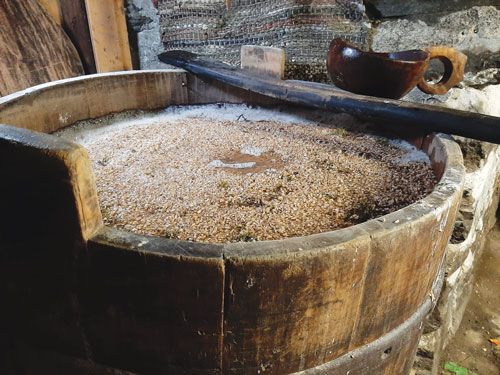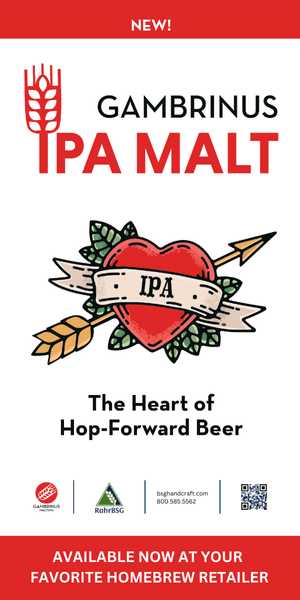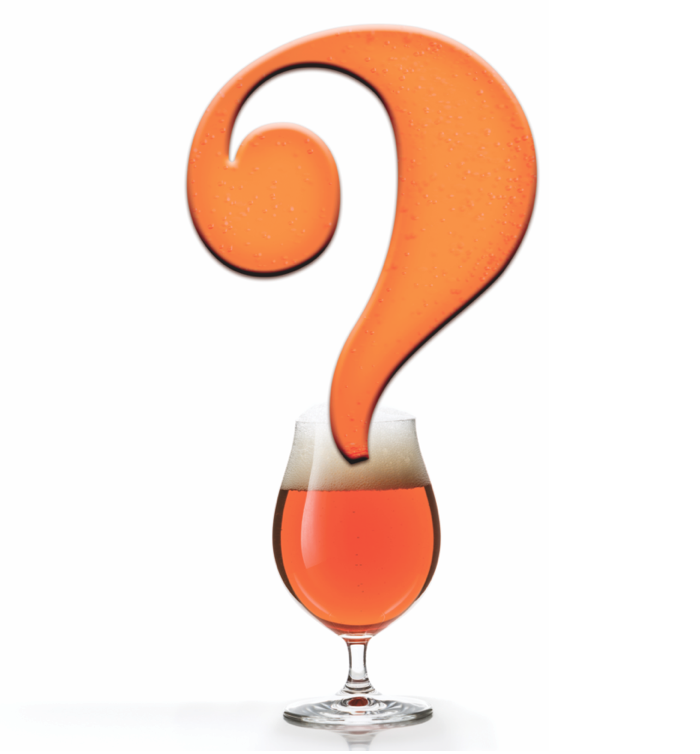The Raw Deal With Raw Ales
Q: I read the Raw Ale article by Lars Garshol in the May-June 2018 of BYO And have been Employing This Technique ever since. I do a standard mash and make a separate hop tea that I add to the sparge water. One key during the mashing and sparging process is To Ensure that neither mash nor wort temperature exceeds 76 °C (168 °F). This is to prevent the formation of dimethyl sulfide (DMS). I mash out into a sterilized container, chill the wort, and put into a fermenter. There are no issues with final clarity when Irish moss is added to the hop tea and gelatin finings are added one or two days before kegging. However, I have noticed some unusual results with the raw ale. Yeast attenuation is extreme (99% apparent). Using standard SafAle US-05 the final gravity (FG) is usually well below 1.003 and most times is between 1.001 and 1.000 with an original gravity (OG) of around 1.040. A good friend of mine brewed a stout raw ale and it finished at 1.003. His stout normally finishes at 1.015. Any thoughts about this topic would be appreciated.
— Richard Albrecht • Johannesburg, South Africa
A: This question makes me want to try brewing raw ales because the method certainly saves time and really addresses one of those nagging questions to young brewers who don’t think outside of the modern box; how did brewers boil wort before metal working was common? And, of course, the answer is that early brews were not boiled! Try telling that to a youngster who has been piped into Google via their handheld device since they were old enough to crawl. OK, right, you are wondering about the crazy high attenuation you are achieving with raw ales.
Before I actually begin answering the question, I do want to touch on yeast. Your strain selection likely has little to do with your observations. Although different strains may make a marginal difference in your final gravity, what is happening in your wort during and after mashing is so dynamic and so good at producing yeast fodder, that this style of brewing presents some special challenges because malt enzymes are not being denatured by boiling.

And this is the topic to really dig into if you want to boost the FG of your raw ales. For all practical purposes, the two enzymes present in malted barley that are relevant to this discussion are alpha and beta amylase. Alpha amylase chops up large starch molecules into smaller chunks, and beta amylase produces maltose and a little bit of glucose from large and small starch molecules. I am going to skip the review and point you to the discussion we had in the November 2020 issue of the “Mr. Wizard” column covering starch conversion.
Your observation with really high attenuation is a great reminder that some of the old brewing chestnuts are more than tired rules. A quick review of wort boiling reminds brewers that boiling kills pathogenic and spoilage microbes, denatures enzymes, coagulates proteins, isomerizes hop alpha acids, helps strip unwanted volatiles like dimethyl sulfide (DMS) from wort, increases wort density, and has a positive effect on finished beer clarity. There are other reasons to boil wort, but these are among the most important.
As a food safety nut and a fan of history viewed through the eyes of a food geek, the killing pathogenic microbes ranks at the very top of the list because this is why beer was such an important beverage in areas without clean drinking water. The fact that wort boiling also kills spoilage bacteria is a nice secondary story because it explains why boiled wort was the perfect media to be fermented by pure yeast cultures. Although clean drinking water is still a concern in many regions of the world, most homebrewers are using potable water for brewing, and the argument that beer is safer than water is not the best excuse to give your wife for pounding pints like your life depended on it! OK, maybe you haven’t done that, but I have unsuccessfully tried that argument and felt pretty dejected by the whole experience.
But the enzyme denaturation story is rock solid, despite all of the changes that have come with modernity. Unboiled wort contains active amylase enzymes that will continue to do their thing beyond mashing. Two interesting things to ponder are the other enzymes that may be present in malted barley and the effect of very long mashing on wort fermentability. I earlier noted that alpha and beta amylase were, for all practical purposes, the only enzymes relevant to this discussion. That’s true when wort is boiled, but in lightly kilned malts, like Pilsner malt, there can be some remaining amyloglucosidase (AMG) activity. AMG is an enzyme that de-branches amylopectin and is used to produce highly fermentable wort for styles like light lager and brut IPA. Another method used to increase fermentability is to use a very long mash. The method you are using allows for residual AMG activity to survive into fermentation (if AMG is present in your base malt) and also allows alpha and beta amylase to continue doing their things for a long time.
My usual way of addressing questions is to leave some solutions to specifically address the problem. I am going to take a different tack on this question and fire off some ideas that could be used to boost the FG of a raw ale. One idea is to alter wort pH after mashing to essentially stop further enzyme activity. This idea will result in a sour ale, but that may not be a problem. You can do this by using a homofermentative lactic species, like Lactobacillus delbrueckii, or by adding acid to your wort to drop the pH below about 4.5. If this sounds interesting, read up on the effect of mash pH on alpha and beta amylase activity.
You can also use crystal, caramel, and a range of roasted grains, to add unfermented carbohydrates, color and flavor to your beers. You may even want to explore separately cold mashing your special malts. Special malts, like Munich and Vienna, contain starch that is acted on by mash enzymes, but roasted grains and crystal malts have very little, if any, starch that will be converted to fermentables and are well-suited for your raw ales.
And perhaps the simplest suggestion is to design your recipe around the fact that raw ales end up being very dry. Look to styles like light lager, saison, Belgian tripel, brut IPA, and dry stouts for ideas on how to brew dry beer with balance. Thanks for the fun question!



